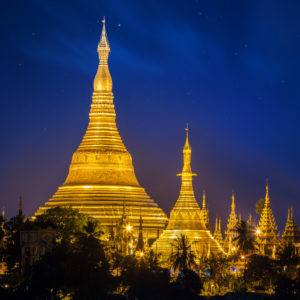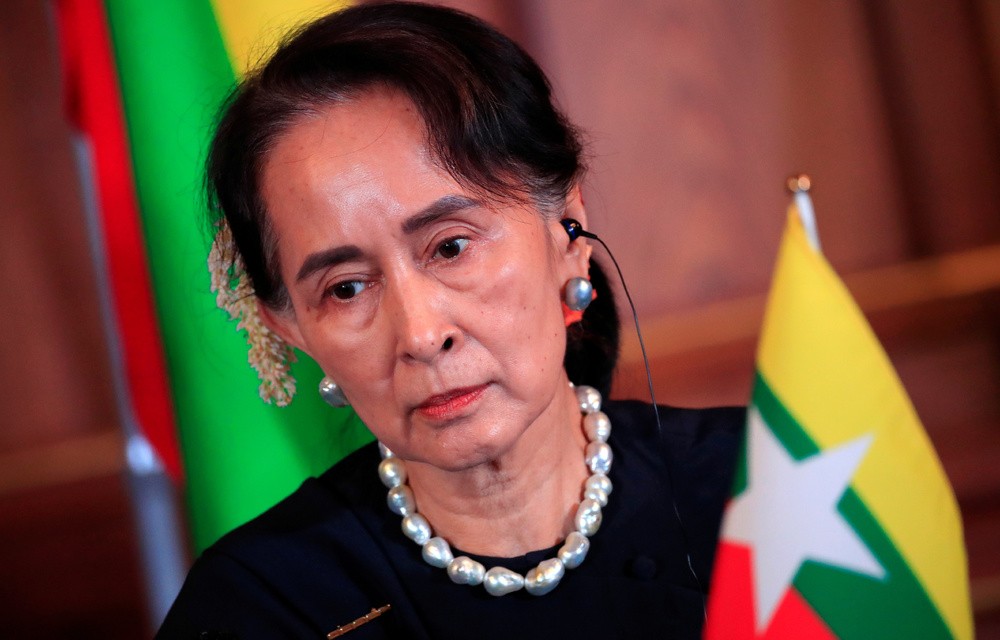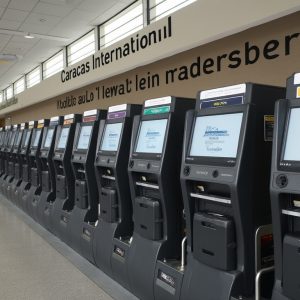MYANMAR REVISITED, by Jeems Akers, Senior Fellow, Americans for Intelligence Reform
“Myanmar urgently needs vaccines and an equitable economic recovery (not a coup).”
Thant Myint-U
This weekend, the military took control of Myanmar (Burma).
Again.
75-year-old Ms. Aung San Suu Kyi (whose political party won a landslide election in November) has been detained along with other democratically elected leaders. The army’s (Tatmadaw) TV station says power has been handed over to commander-in-chief Senior General Min Aung Hlaing. No major violence has been reported (the suffering populace has seen this movie several times before), soldiers are blocking roads in the capital (Nay Pyi Taw) and the major city (Yangon, formerly Rangoon). Internet and phone services have been disrupted, and international and domestic TV channels were forced off the air. A one-year state of emergency has been declared.
The event barely caused a ripple in western media outlets. More important things dominate our news: President Biden’s avalanche of new executive orders, vaccine-related stories, a major winter storm crawling across the U.S., Reddit’s WallStreetBets forum’s raid on silver and GameStop shares, and local efforts to oust the Trumps from Mar-a-Lago.
Catastrophic occurrences on the other side of the world will continue to be largely ignored as long as we remain wrapped around the axle of our domestic political obsessions.
Whenever I see a news report about Myanmar, I think of my young student guide at the Shwedagon Pagoda practicing his English language skills on a strange American visitor. I wonder where he is today, and whether he has given up on his dreams of freedom.
In this vein, and as a tribute of sorts to this unnamed young man, I am resending a piece to a handful of friends from earlier this summer which I titled “Sweatin’ At Shwedagon.”

“Then, a golden mystery upheaved itself on the horizon, a beautiful winking wonder that blazed in the sun …”
Rudyard Kipling
Here on the East Coast it is hot.
I mean really hot.
Hotter than a Jalapeno pepper stand in Death Valley.
Hotter than a gold leaf on Shwedagon’s lofty spire.
The heat has turned my grass brown and is suffocating my plants.
This intense heat reminds me of my brief visit to Burma (now called Myanmar by the junta) and the city of Rangoon (now called Yangon) several years ago. I was convinced, at the time, that it was the hottest place on earth.
In 1889, the great British writer Rudyard Kipling visited Burma for three days.
It changed his life forever.
Burma has that effect on people.
Amidst the heat, and with Ima and I self-quarantining because of the pandemic (the U.S. casualty count—if the figures are to be believed—now tops 150,000), [NOTE: today a new projection from the University of Washington predicts that the COVID-19 death toll will reach 619,000 by May, with troubling reports that a new strain arriving from South Africa may be resistant to the new vaccines. ] I have been spending part of my time reading. One of my favorite authors is Christopher G. Moore. In my view, Moore understands the cultural dynamics of Southeast Asia better than any other fiction writer out there today.
I asked my daughter to order his four most recent books for me from Amazon.
The first book I read was Missing In Rangoon.
Moore’s protagonist is a rough-and-tumble private investigator living in Bangkok, Thailand—originally from New York—named Vincent Calvino. His best friend and protector is a saxophone-playing, Shakespeare-quoting, Thai senior police official Colonel Pratt. The books always revolve around the cultural interplay between the two, one Western (a farang) and one Eastern. I thoroughly enjoy that dynamic.
A word of caution. Moore’s works are not for the faint of heart. They are set in the ugly and seamy underbelly of Bangkok—replete with the denizens that inhabit and work in bars in the red-light sex districts like Patpong and Soi Cowboy, sleezy bureaucrats, corrupt police officers, grisly murders and disillusioned ex-pats.
Moore paints a word-canvas that flows with a heady concoction of characters, always framed in cultural shades of gray.
Some of you who regularly read my missives are probably asking about now: is there anything spiritually redeeming about Moore’s books?
To which I must confess, nothing whatsoever!
In Missing In Rangoon, Calvino—hired to find a missing person—and Pratt travel to the Burmese city. During one early scene in the book, Calvino gazes from his hotel room balcony on the silhouette of the Shwedagon Pagoda on the city’s skyline. I instantly was swept back to my own journey to steamy Rangoon and to the shrine, one of the holiest sites in Theravada Buddhism. I still cherish the experience: it was a trip to a different world.
What is the Shwedagon Pagoda?
If you check Wikipedia or countless travel guides, you’ll learn that the Shwedagon Pagoda—officially Shwedagon Zedi Daw (literally the “Golden Dagon Pagoda”)—is a gilded stupa, with its main spire standing over 367 feet high at the center of a sprawling religious complex that overlooks and dominates the Rangoon skyline. City regulations dictate that no building in Rangoon can be can be as tall as the stupa (much as here in Washington, no building in the District of Columbia can be taller than the Washington monument). Travel guides also will tell you the pagoda was constructed over 2,600 years ago—making it, arguably, the oldest stupa in the world—and the most sacred Buddhist site in Burma (Myanmar). Much more certain, since the 16th century, the Shwedagon Pagoda has been the most famous Buddhist pilgrimage site in Burma. The site’s golden stupa—a mound-like structure containing relics that make it a place of meditation—is believed to contain relics of the four previous Buddhas of the present kalpa: the staff of Kakusandra, the water filter of Konagamana, a piece of Kassapa’s robe, and most importantly, eight strands of hair from the head of Gautama himself.
As a Christian believer in Jesus Christ as the sole way, truth and life, I always am fascinated with the religions of other cultures—what they believe and why they believe what they do.
So, not knowing exactly what to expect, I had a taxi drop me off at the pagoda. The taxi itself was a dent-ridden relic of the British colonial era, coughing and sputtering incessantly like the worst patient in a pneumonia ward; I was never fully convinced it would successfully make the ascent to the pagoda. The red-eyed Burman behind the wheel looked he had just finished a work shift somewhere else (you would know the look if you’ve observed the cooks at a Waffle House at 3:00 in the morning).
From the pagoda mount, I could see the first shimmering rays of sunlight—it was already hot—trying to break through the smothering fog-layer over Rangoon stretched below. So much for my strategy of getting an early start to beat the heat. After paying the entry fee (less than ten dollars) and taking off my shoes (it took a full two weeks to get the bottom of my feet clean), I walked through one of the complex’s four gates, guarded by highly stylized leogryphs (lion-like creatures). Inside, I was met by a college-age, brown-skinned young man wearing a thick set of spectacles and a scruffy beard, who—for a fee—offered to guide me around the pagoda’s grounds. He appeared likeable enough, his English was certainly adequate, and after negotiating a price, we set off to explore several noteworthy sites within the huge religious compound. I’m sure that he narrowed down the hundreds of possibilities for my benefit. At each stop, I could almost hear the inner mental workings: “Is this the type of display that would interest a foreign visitor?”
A farang?
There are no words sufficient to explain the initial impressions of the Shwedagon Pagoda on a first-time Western visitor. The pagoda grounds resembled a cross between Disneyland on spiritual steroids and a Buddhist burial ground: a dizzying array of statues, images of Buddha, colorful prayer flags, and animal idols of every size and description were omnipresent with no particular order (at least from my Western perspective); the sounds of beating drums; omnipresent candles and burning incense sticks; a tall golden stupa encrusted with over 5,000 diamonds and over 2,000 rubies, sapphires and other precious gems, all topped by a 76-carat diamond; and there were hundreds of smaller burial stupas everywhere. As we walked we dodged saffron-robed monks, observed supplicants placing flowers and food while water-rinsing idols of all shapes and sizes, entered gateways protected by huge, fierce-looking supernatural guardians, watched scores of faithful buying gold leaf strips for merit, and—everywhere—bent and wrinkled betel-nut chewing old women seeking protection from the hot morning sun under their umbrellas.
I tried to engage my guide in the type of small talk designed to get to know him better and satisfy myself that he was not a planted stooge of the junta. To get into Myanmar, I had taken advantage of a brief “charm offensive” mounted by one of the Burmese military’s hand-picked Prime Ministers (Khin Nyunt), designed to open the country to outsiders in a bid to ease the Western trade embargo. I was a beneficiary of that temporary window of time: the opening would slam shut again in the months ahead. Rangoon was what I envisioned Havana to look like back in the early 60s: a city frozen in time; the streets clogged by old vintage cars and buses held together by duct tape, wire and various assortments of Bonzo glue and plastic adhesives (my former brother-in-law and part-time mechanic Doyle Thomas would have been proud of their ingenuity); dated storefronts and houses in desperate need of repair; and food and goods vendors of all descriptions.
The city was dirty and the people were impoverished. Of course, as in all authoritarian societies, thewealthy monied and power elites—as well as the top tier of military generals—lived in plush lakeside walled communities on the city’s outskirts.
But back to the pagoda.
Although my visit was long ago—and I have forgotten many of the amazing things I witnessed at the pagoda—three stops of that tour made an impression that has stayed with me.
First, following our initial conversations, my guide led me to a special memorial. A marker there commemorated the students who had gathered on the pagoda grounds in 1920 to protest a New University Act which, they believed, would perpetuate British colonial rule. Indeed, over the years, the pagoda grounds have hosted a variety of student, labor and monk uprisings. Near the site where we stood, for example, in 1946, General Aung San addressed a crowd demanding independence from the British and over forty years later, his Nobel-prize winning daughter Aung San Suu Kyi addressed a crowd of over 500,000 demanding democracy from the military regime.
When I mentioned her name to my guide—she was then under house arrest—he put his finger to his lips and furtively glanced to his left and right. “They have eyes and ears everywhere,” he whispered fearfully. In late September 2007, long after I had left the country, the pagoda was closed by the authorities in the midst of the so-called “Saffron Revolution” led by monks and students demanding more democracy. Violent clashes between the authorities and the monks near the pagoda resulted in several deaths.
I have often wondered if my mild-mannered guide was among those protestors.
Regardless, I have never forgotten that look of fear and those words. He was living in a junta-controlled country controlled by a secret police apparatus. But the technical abilities of the generals were limited. [Now, with Chinese assistance, the Tatmadaw’s abilities to surveil and monitor the populace has increased exponentially.]
Meanwhile, in our country we are slipping steadily toward an elite-driven technological surveillance state. I can’t help but wonder what kind of freedoms my grandchildren will enjoy.
The second memorable stop at the pagoda came as a complete surprise. My guide took me to a statue of an English wizard located in the pagoda’s Hall of Wizards. There were several chairs under the pavilion with several persons—young and old alike—kneeling nearby. Fragrant flowers had been scattered around the statue.
In the West, our contemporary knowledge of wizards, witches and the like are shaped by movies, the Hogwarts School of Witchcraft and Wizardry in the Harry Potter series of books by J.K. Rowling, and a growing number of television shows. In Buddhism, the belief in weikzas (wizard saints who act as the embodiment of the spiritual world) is far more serious than fantasy literature and entertainment. At the wizard’s shrine, I watched several aspiring wizards deep in meditation and praying for magical help.
My guide asked me if I was interested in joining them.
“I only worship the Lord Jesus Christ,” I replied.
“I see,” he said, and hustled me to our third stop in a remote section of the pagoda grounds where I stood before an intricate wooden carving of a woman encased in a large glass display case.
“What do you see?” my guide asked.
As we stood there, a crowd of people started to gather around us.
I started to feel uneasy. “Am I supposed to see something special?”
“Some Christians see the carving crying. Do you see any tears?”
I tried my hardest to see anything in the wood grain that looked like tears.
There was nothing.
Those around me studied my face and then started to slowly drift away.
They expected a white-skinned farang would bring them a confirmation of a miracle.
Little did they know that I have been looking for miracles all my life.
Back in Bangkok, I returned to one of my favorite spots.
The eye-popping lobby of the Erewan—one of the “City of Angels” grandest hotels—features at the far end a majestic staircase guarded by two huge, carved stone, black elephant sentinels. The impressive marble stairwell leads to elaborately decorated floors above.
Hovering, almost lifelike, over the staircase’s first landing is a gigantic painting. I mean the type of artwork that takes your breath away. Vibrant colors—especially the reds and golds—depict a variety of Asian landscapes populated by scores of humans and supernatural creatures. But what attracts me, every time, is the artist’s rendition of a giant spiritual “zipper” separating, at various junctures, the physical world from the world beyond our perception.
That piece of artwork best captures, in my mind, the essence of the mysteries of Buddhism. It sums up, in one larger-than-life canvas, the incredible visual and spiritual experiences of places like the Shwedagon Pagoda.
The artwork is magnificent.
And unforgettable.
I always leave the place wanting to capture—with my own artistic rendition—the separation of this world and the glorious vision of New Jerusalem and the Kingdom to come.
Sigh.
As a final note, when I finally returned to Washington, I gushed about the beauty, splendor and exoticness of the Shwedagon Pagoda to my Thai language instructor.
I thought she would be impressed.
“Jeemes, you know of course that none of that gold is from Burma. They stole it from the Thais …”
Sigh.
[1] Min Aung Hlaing, now 64, took control of Myanmar’s military in 2011. He was placed under U.S. sanctions in 2019, based on a U.N. investigation finding the military’s operation against a Muslim ethnic group, the Rohingya’s, had “genocidal intent.” He is also banned by Facebook and Twitter. His extended term as commander ends in July 2021, with some analysts believing he will become the top civilian leader. See, Adam Taylor, “FAQ: What is going on in Myanmar aafter coup removes Aung San Suu Kyi,” The Washington Post, Feb. 1, 2021.
[2] “Myanmar coup: Aung San Suu Kyi detained as military seizes control,” BBC News, Feb. 1, 2021.
[3] Yoni Heisler, “Study makes horrible new coronavirus prediction that has so many people worried,” BGR, Feb. 1, 2021.




